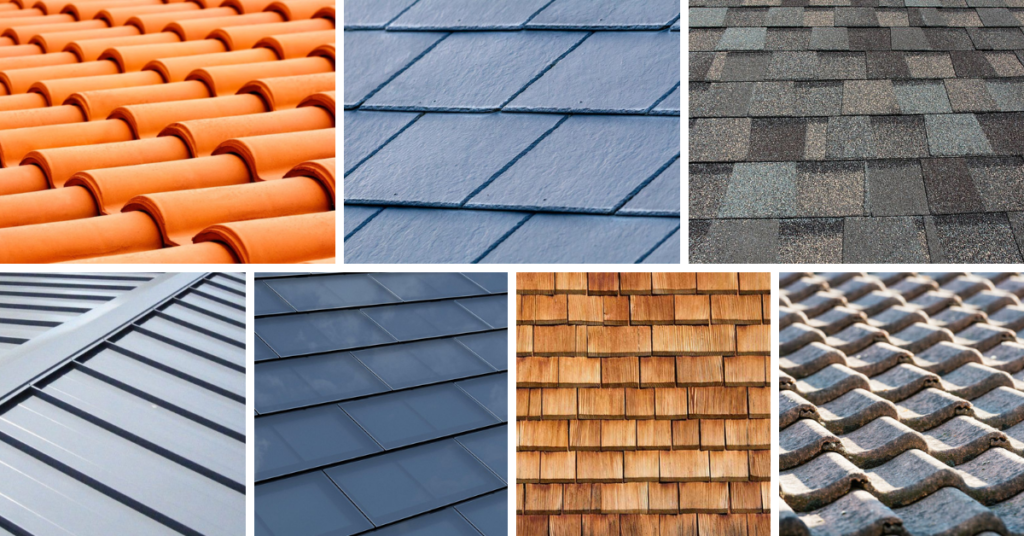When building a new home, one of the most important design decisions you’ll face is choosing the type of roof. Your roof isn’t just about aesthetics—it affects energy efficiency, maintenance costs, and long-term durability. The two main types of roofs for residential homes are pitched and flat roofs. Each has unique pros and cons, and each supports different roofing materials that impact performance and cost.
In this blog, we’ll break down the pros and cons of pitched and flat roofs—and dive into the best material choices for each.
Pitched Roofs
What is a Pitched Roof?
A pitched roof is sloped, allowing rain, snow, and debris to run off easily. It comes in many styles like gable, hip, or gambrel, and is common in traditional residential construction.
Pros of Pitched Roofs
- ✅ Excellent drainage prevents standing water and moisture buildup
- ✅ Long lifespan, especially with durable materials
- ✅ Bonus attic space or vaulted ceilings
- ✅ Classic curb appeal across a wide range of home designs
- ✅ Often adds to resale value
Cons of Pitched Roofs
- ❌ Higher upfront costs due to complex framing
- ❌ Challenging repairs and less walkable surfaces
- ❌ Not ideal for ultra-modern or minimalist home designs
Common Roofing Materials for Pitched Roofs
- Asphalt Shingles
- Pros: Affordable, widely available, easy to install
- Cons: Shorter lifespan (~20-30 years), less eco-friendly
- Metal Roofing (Steel, Aluminum, Copper)
- Pros: Long-lasting (40–70 years), recyclable, energy-efficient
- Cons: Higher cost, noise during rain (can be mitigated)
- Clay or Concrete Tile
- Pros: Excellent durability and fire resistance, great for warm climates
- Cons: Very heavy (may require reinforced framing), expensive
- Wood Shingles or Shakes
- Pros: Natural, rustic appearance
- Cons: Vulnerable to fire and rot, requires regular maintenance
- Slate
- Pros: Extremely durable (lasts 100+ years), premium appearance
- Cons: Expensive, heavy, requires skilled installation
Flat Roofs
What is a Flat Roof?
A flat roof is nearly level, with a subtle slope to drain water. Once mainly used in commercial buildings, flat roofs are now popular in modern and urban home designs due to their clean, minimalist look.
Pros of Flat Roofs
- ✅ Modern aesthetic and minimalist appeal
- ✅ Usable space for rooftop decks, gardens, or solar panels
- ✅ Easier access for maintenance and inspections
- ✅ Lower initial construction cost compared to complex pitched designs
Cons of Flat Roofs
- ❌ Drainage issues if not installed and maintained correctly
- ❌ Shorter lifespan compared to steep-slope roofs
- ❌ Higher maintenance needs to prevent leaks or ponding
- ❌ Less insulation and ventilation unless specially designed
Common Roofing Materials for Flat Roofs
- EPDM (Rubber Membrane)
- Pros: Cost-effective, lightweight, easy to install and repair
- Cons: Black color absorbs heat unless coated with reflective material
- TPO (Thermoplastic Polyolefin)
- Pros: Reflective, energy-efficient, resists UV and chemical exposure
- Cons: Less flexible in colder climates, newer to the market
- PVC (Polyvinyl Chloride)
- Pros: Strong, durable, excellent for resisting chemicals or grease (great for homes with rooftop kitchens)
- Cons: Expensive compared to EPDM and TPO
- Built-Up Roofing (BUR)
- Pros: Time-tested, great protection with multiple layers of asphalt and felt
- Cons: Very heavy, longer installation time, not ideal in hot climates
- Modified Bitumen
- Pros: Tough and flexible, ideal for residential flat roofs
- Cons: Requires heat during installation, which can pose fire risks if not handled properly
Choosing the Right Roof: What to Consider
When deciding on your roof type and material, ask yourself:
- ✅ What’s my local climate? Snowy regions favor pitched roofs; flat roofs suit dry or urban environments
- ✅ What’s my design style? Traditional vs. modern homes may steer the choice
- ✅ What’s my budget—now and long-term? Consider upfront costs and maintenance/lifespan
- ✅ Do I want rooftop space or solar panels? Flat roofs offer greater usability on top
Final Thoughts
Your roof is one of the biggest investments in your home. It affects performance, protection, energy bills, and resale value. Whether you’re leaning toward the durable charm of a pitched roof or the sleek versatility of a flat roof, pairing the right design with the right materials is key to long-term satisfaction.
Need help selecting the best roof for your new home? Click Here or call us at 800-505-0087 to contact our team for expert recommendations tailored to your budget, climate, and design vision.



